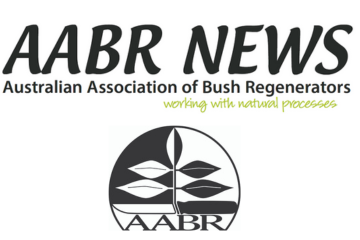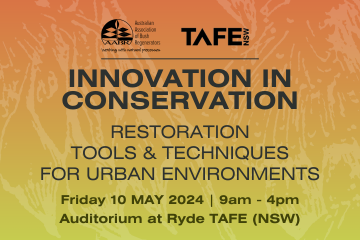Ray Thomas
This is the first of two articles in which Ray uses his experience to look at ways we can make the UN Decade on Ecosystem Restoration result in positive achievements.
With another year of committed effort behind us, and a new year already well under way, I imagine many of us will have done some reflecting on the year that was, and the year to come.
How did we fare on the outcomes we were aiming for – both for nature, and also for the people involved?
I’m sure there are many good stories to tell already, and I think they’d be very helpful for readers to share with each other. A regular newsletter page highlighting successful results from friends could be very encouraging and inspiring. Please send them in!
But beyond a single year’s work on our own patch, it’s also a very good time to think about the ‘bigger picture’. How are we going with the United Nations’ Decade on Ecosystem Restoration?
The title says it all. It’s not merely tallies of areas treated or number of trees in the ground, but how are we going with restoring ecological processes – so nature can heal itself?
With 3 years of runs on the board, it’s a strategic point to see what aspects we’re doing well at, and which areas might need extra attention. Then we can direct more effort in those directions.
- Can we see significant signs of change in the health of a landscape?
- Can we see the ecological processes strengthening?
- Are our inputs making a sustained and cumulative difference, with long-term effects?
- Can we identify successes that we can build on?
- Have we spotted aspects of our practice that need improvement?
These bigger picture advances are things we can be very proud of!!
So, it’s worth taking the time to name them, celebrate and share them with our conservation community.
Sociological Outcomes
And entwined with the ecological focus, there’s a sociological issue that’s crucial for our progress.
How can we hugely ramp up the outputs?
How can we shift the size of our restoration work to landscape scale?
A major part of this must be by engaging, enthusing and empowering people from the wider community – people who’d like to be involved, but don’t know what to do or how to help.
I’m guessing AABR members are already concerned with these last questions.
I’ve spent 22 years working on precisely these things whilst running the Regent Honeyeater Project in Benalla, VIC. And now, as a ‘retired’ volunteer, I am still trying to make a difference 6 years later. I think I may have some helpful insights to share.
The future
The next 7 years can give enough time to see even bigger changes if we use our energies in the most effective ways possible. I’m guessing we’ll need to be strategic and targeted rather than ad-hoc with our work:
- taking the most informed directions possible
- choosing the most effective actions
- the most critical locations
- the most strategic sequence of works
- and the timings when our actions will have the most effect.
I’m sure readers will have thoughts on getting the best results from our efforts over this period. I have lots to say on such specifics, but again it may be interesting to open discussion about helpful approaches; positives to build on, and negatives to avoid.
Best wishes for your efforts this year.
Ray Thomas was the inspiring leader behind the highly popular Regent Honeyeater Project in the Lurg Hills, near Benalla, Victoria for 22 years and won the Australian Geographic Society Conservationist of the Year Award for 2009. Since his retirement, Ray continues to work as a volunteer, striving to make a difference – and so has many helpful insights to share.




Leave A Comment